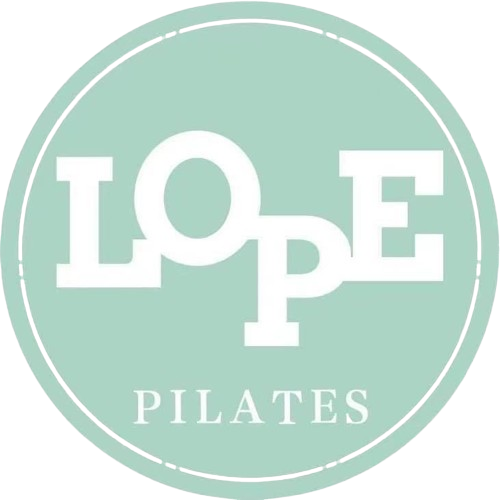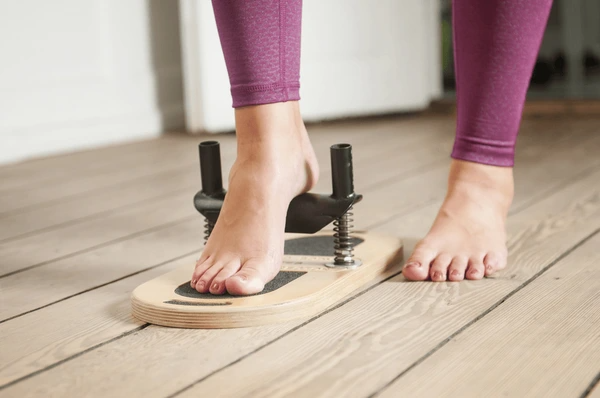In Australia, it's estimated that over 1.1 million people aged over 15 participated in Pilates last year. This underscores that consumers are opting for mind-body activities and taking their mental and physical well-being seriously.
So, you have become a seasoned pro and are planning to invest in Pilates equipment for your home. Or someone got super inspired by Pilates and is getting started with this exercise type. Either way, you can't simply grab some equipment of your choice. You must understand the equipment, its uses and how it essentially aligns with your fitness goals.
Read this comprehensive guide on how to purchase commercial pilates equipment in Melbourne.
What is Pilates and what is it worth?
Pilates, initially called Contrology, is a method that involves your whole body in exercise. This concept was created in the early 20th century by Joseph Pilates. The exercises mainly focus on coordinating movements and breathing together to work even your body's smaller and deeper stabilising muscles.
Benefits of pilates
It helps increase core strength and muscle tone.
Pilates equipment such as a reformer or wunda chair introduces resistance through springs and pulleys, which helps to build and tone muscles.
They also target your core as well as work on other muscle growth and ensure that you get a balanced workout.
Improves posture
We know that a strong core is the backbone of good posture. By developing a strong core, it helps improve good posture. Consistent use of equipment like Pilates Arc helps align your spine and strengthen those support muscles.
Bounce back from injuries
Did you know that Pilates equipment helps with rehabilitation? Since it's gentle on your body while also building strength, practicing this makes it easier to bounce back from injuries.
Increased body awareness
By practicing Pilates, using equipment like a reformer can help you focus on your movements and engage your muscles. This mindfulness boosts your overall body awareness.
Supports all fitness levels
Whether you are a Pilates newbie or an advanced practitioner, the equipment has got your back, literally. You can simply adjust the resistance on machines like the reformer and make it easy for beginners or extra tough for seasoned professionals.
What are the different types of pilates equipment available?
1. Reformer
It goes without saying that the reformer is the most famous piece of Pilates equipment. In fact, people think about a reformer when they hear about pilates.
This equipment comes in a bed-like rectangular frame that is either made of wood or metal. On the frame's top, there is a padded platform known as the carriage that is attached to one end by a set of springs. This equipment is designed to be versatile enough to suit both beginner and advanced Pilates practitioners.
2. Cadillac
The Cadillac, also known as the Trapeze Table, is a somewhat intimidating, piece of equipment. It looks like a large, raised bed with a canopy frame above it. This frame supports different types of attachments, including trapeze bars, push-through bars and straps with handles or loops.
What makes this equipment special is that it is recommended for rehabilitation as it helps you do exercises that might be too difficult on other equipment. Overall, the cardillac is incredible versatile.
3. Ladder barrel
The Ladder Barrel combines a curved, padded barrel and a ladder-like set of rungs. This was one of the pieces of Pilates equipment originally designed by Joseph Pilates using an empty beer keg.
It was made to help the spine move into extension and flexion. So, it is mainly used for stretching and strengthening exercises, especially for the back and core.
4. Magic ring
Often referred to as a Pilates ring, this is another small and portable piece of Pilates equipment that was designed and invented by Joseph Pilates.
This flexible rubber or metal ring is often lightweight and portable and is designed to provide different amounts of resistance to increase support during exercise. In short, Pilates rings help your muscles work harder and you actually end up building muscle, which you normally don't when you do Pilates without a ring.
Get your small pilates equipment & accessories in Sydney. Quick delivery is guaranteed.
5. Wunda chair
Also known as a Pilates chair, it is a compact piece of equipment that resembles a box with a padded seat and a pedal that can be pushed down with springs for resistance. It's another original piece of Pilates equipment invented by Joseph Pilates and one of the first pieces of equipment to have springs that were attached to a pedal. Though it has a simple appearance, this equipment is often used for a challenging workout.
Thanks to its space-saving size, it remains a popular choice for home use and suits Pilates practitioners of all levels.
6. Pilates Arc
A Pilates arc or arc barrel, is a curved piece of Pilates equipment that comes with a paded surface for comfort.
This one is Pilates practitioners favourite full-body training tool because it's lightweight and easy to move around. It's mainly designed to support and enhance various exercises. In particular, it's gently curved, targets your spine and maintains good posture.
This equipment is perfect for anyone, irrespective of their fitness level and helps improve their spinal mobility and overall body awareness.
7. Pilates mat
A Pilates mat is mistaken for a yoga mat. But remember that both have subtle differences.
Remember, a standard yoga mat measures 1/8 to 1/4 inch thick and isn't enough to guard your sensitive areas while performing Pilates. In fact, it's designed to be thinner so that yoga practitioners can stand and balance properly.
A Pilates mat is a specially designed mat used in Pilates exercises, measuring 1/2 inch thick with compact foam to provide more support for your sensitive body parts.
Grab some high-quality commercial Pilates equipment, upgrade to your studio today and give your clients the best Pilates experience.
What are the key considerations for equipment selection?
When you are thinking about investing in Pilates equipment, there are some key factors to keep in mind.
Whether you are planning to set up a home studio or professional space, don't invest in one without going through this guide.
How much room do you have?
Whether it's a home setup or a studio setup, first measure the space.
For a home setup, ensure you have enough room to place Pilates equipment and perform exercises comfortably.
For a studio setup, ensure there is space to place multiple pieces of equipment and for clients to move around safely.
What's your budget?
Only when you have a budget in mind can you prevent overspending.
If you are a newbie and have a tight budget, consider investing in small equipment such as a magic circle or a basic Pilates mat.
High-quality Wunda chairs are more expensive but offer a broader range of exercises and durability.
Looking for small pilates equipment & accessories in Melbourne? Take a peek at our collections.
What are your fitness goals?
Is it for strength training? If so, look for equipment like the Reformer and Wunda chair that offer adjustable resistance.
Do you want to increase flexibility or do rehabilitation exercises?
Invest in Cadillac and Ladder Barell, which are excellent for stretching and recovery exercises.
Don't overlook quality and durability.
If you don’t want your investment to go in vain, it's crucial to invest in quality pilates equipment and learn how long the equipment will last.
So, when it comes to quality, you must check the brand's reputation.
Next, check the quality of the equipment, such as stainless steel frames, durable upholstery and robust springs.
For instance, check the reformer's frame material. Often, it's made of solid wood or robust metal, either steel or aluminium.
How adaptable is the equipment?
If you are buying a reformer, look for ones with adjustable springs and foot bars to suit Pilates practitioners of different levels.
How user-friendly is the equipment?
Some equipment demands professional assembly, while others can be quickly set up at home using basic tools. In some cases, this equipment doesn't need any assembly in the first place.
How do you choose the right mat for your practice?
We have already made it clear that a Pilates mat is different from a yoga mat. So while choosing one, look for the thickness and grip for the best comfort and stability while you perform exercises.
Thicker mats, around 1/2 inch, are perfect because they can offer more support, especially if you have sensitive joints or require extra cushioning.
Also, mats made of materials like TPE or natural rubber offer excellent grip.
Check if the mat comes with a non-slip surface that helps prevent you from sliding around during your practice.
How do you check the versatility of resistance bands?
Choosing the right resistance bands means you must consider material quality, resistance levels, type of band, and additional features like handles or attachments.
Check the material quality.
Latex is known for its elasticity and durability and is often sought for its smooth and consistent stretch.
Non-latex bands are best for those with latex allergies. These bands are made from synthetic rubber or other materials and can be just as durable.
Often used for loop bands, fabric bands are more comfortable against the skin and less likely to roll up during exercises.
Resistance levels
Also, check the resistance levels that vary in resistance levels, such as light, medium, heavy and extra heavy.
Final Words
Finding the perfect Pilates equipment in Melbourne doesn't have to be a hassle anymore. We hope this guide has given you some insights. At Lopepilates, we have an awesome sauce pilates equipment collection. Shop online and start your journey towards a healthier you.






Share:
The Pilates Sliding Discs Routine: Unlock Your Full Potential with This Ultimate Workout!
A Guide to Pilates Equipment for Seniors to Enhance Health and Well-being